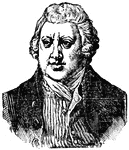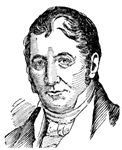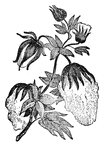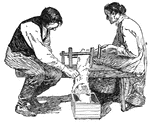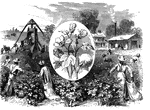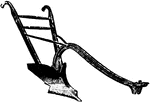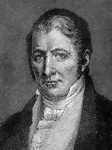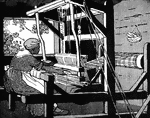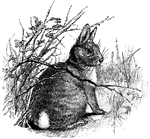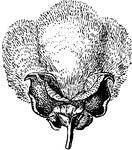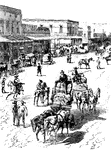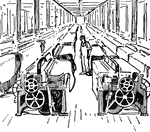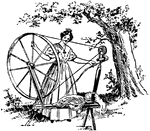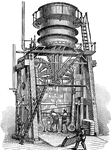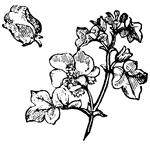
Cotton
A shrubby plant with seeds developing in capsules. Seeds are surrounded by a fluffy type of fiber that…

flax
The flax plant supplied the threads required for the linen manufactured into clothing before cotton…
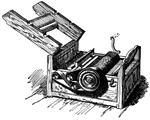
Eli Whitney's Cotton-Gin
Whitney's cotton gin had a permanent influence on America's slavery. With-out a cotton-gin a slave could…
General Hospital Exterior
"United States General Hospital, Hilton Head, S. C., exterior. The United States General Hospital at…

General Hospital Interior
"United States General Hospital, Hilton Head, S. C., interior. The United States General Hospital at…

Lake Providence
"Lake Providence, La., headquarters of General McPherson and the Federal division under his command.…
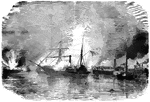
Harriet Lane
"Daring and desperate attack- surprise and capture of the United States gunboat Harriet Lane…

Wounded Federals
"Towing the wounded Federal soldiers down the bayou on a raft, on the night of January 14th, 1863, after…
War in Texas
"The War in Texas. Brownsville, occupied by the army under Major General N. P. Banks, in 1863. The sudden…

Fruitful cotton plant
An early, rapid fruiting, productive type of cotton plant, with low fruit limbs, short joints and continuous…
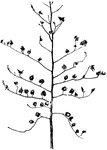
Unfruitful Cotton Plant
A late, slow fruiting, unproductive type of cotton plant, with high fruit limbs and long joints. Leaves…
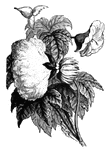
Cotton Plant
"Cotton Plant, which was regularly exported in small quantities from the South."—E. Benjamin Andrews,…
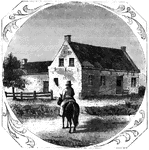
Vankleek House
The Vankleek House. It was built by Myndert Vankleek, one of the first settlers in Dutchess county,…
!["View from the site of Fort Cornwallis. Fort Cornwallis occupied the ground in the rear of the Episcopal church, now a grave-yard. This view is from within the inclosure, looking northeast, and includes a portion of Schultz's bridge, the Savannah River, and Hamburg upon the opposite bank. In the foreground is seen portions of the church-yard wall, and upon the brink of the river below are [African Americans] employed in placing bales of cotton upon the wharves for transportation to the sea-coast. The wharves are two stories in height, one to be used at low water, the other when the river is 'up.' There were remains of the ditch and embankments of the fort within the grave-yard when I was there; and the trench leading to the water-gate, where the 'Pride-of-India tree is seen, was very visible."—Lossing, 1851](https://etc.usf.edu/clipart/14100/14143/ft-cornwalli_14143_mth.gif)
Fort Cornwallis
"View from the site of Fort Cornwallis. Fort Cornwallis occupied the ground in the rear of the Episcopal…
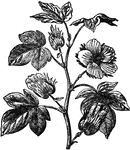
Cotton Plant
"Cotton is a vegetable hair or filament constituting the wing of the seed of the different species of…
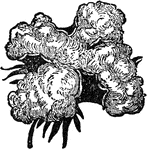
Cotton Flower
"Cotton is a vegetable hair or filament constituting the wing of the seed of the different species of…
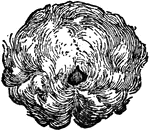
Cotton Flower
"Cotton is a vegetable hair or filament constituting the wing of the seed of the different species of…

Palium
"The English cloak, though commonly adopted as the translation of these terms, conveys no accurate conception…
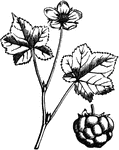
Cloudberry
A simple plant four to eight inches high. The flowers are large and white; and the berries a yellow&orange…

Cotton-plant
A plant of several species, all growing in warm climates, and bearing the cotton of commerce.
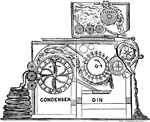
Cotton Gin
A section of the cotton gin, showing the cotton passing frrom the feeder over the cylinders.
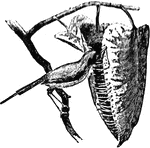
Tailorbird
A genus of birds of the warbler family, and so named from their habit of sewing leaves of cotton or…

Fibers
Figure A shows cotton fibers which are smooth on the surface, where as figure B shows woolen fibers…
